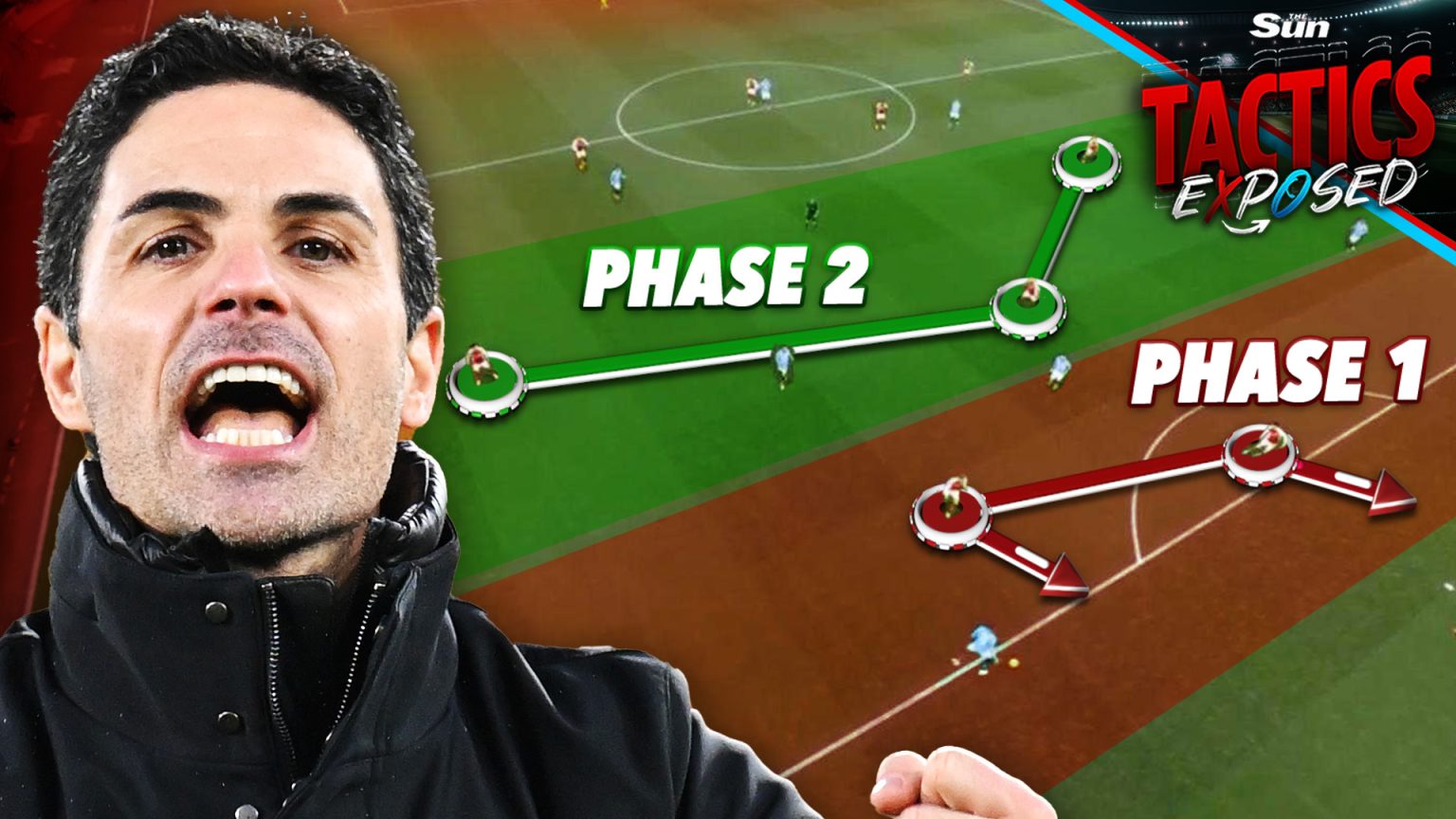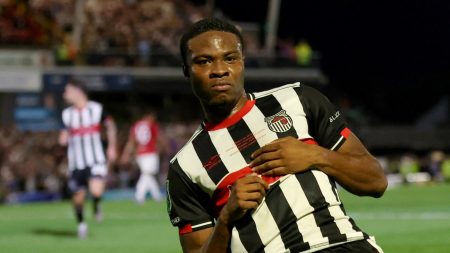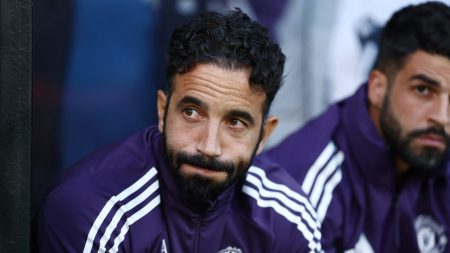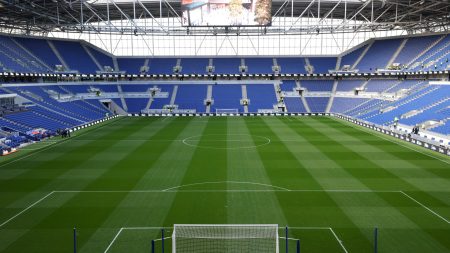Arsenal’s resounding 5-1 victory over Manchester City showcased a tactical masterclass orchestrated by manager Mikel Arteta. The Gunners’ aggressive “double press” system suffocated City’s midfield, forcing errors and creating numerous scoring opportunities. Arteta deployed a 4-4-2 formation when defending, with Kai Havertz and Martin Odegaard leading the initial press. Once City bypassed the first wave, a second wave of pressure, spearheaded by Leandro Trossard, Gabriel Martinelli, and Declan Rice, swarmed the ball carrier. This relentless pressure led directly to Arsenal’s opening goal, with Trossard dispossessing Manuel Akanji, setting up a swift passing sequence culminating in Odegaard’s finish. The effectiveness of the double press disrupted City’s rhythm and instilled a sense of anxiety in their possession play.
Arsenal’s tactical approach also involved strategically neutralizing specific City players. Matheus Nunes and Manuel Akanji were afforded space, deemed less threatening than the likes of Bernardo Silva, Phil Foden, and Erling Haaland. By focusing their defensive efforts on City’s key creative players, Arsenal effectively limited their influence on the game. This tactic rendered Nunes and Akanji almost redundant, allowing Arsenal to concentrate on containing City’s more potent attacking threats, thus creating what seemed like an 11 vs. 9 advantage for the Gunners. This shrewd tactical decision allowed Arsenal to effectively control the midfield and dictate the tempo of the match.
Manchester City’s tactical setup, featuring six attackers, proved ineffective against Arsenal’s robust defensive organization. While City’s formation included three defenders, with Josko Gvardiol dropping deep to accommodate Matheus Nunes’ high positioning on the right, this approach restricted Gvardiol, one of City’s most effective attacking defenders, from advancing into the opponent’s half. The resulting congested midfield limited space for new signing Omar Marmoush and Phil Foden, stifling City’s attacking fluency. In contrast, Arsenal also deployed six players in a central block, consisting of three pairs: an attacking duo, a midfield duo, and a defensive duo. This structure allowed Arsenal to control key areas of the pitch and stifle City’s attempts to create clear-cut chances.
Thomas Partey played a pivotal but often understated role in Arsenal’s victory. Tasked with screening Erling Haaland, Partey effectively disrupted the direct passing lanes from goalkeeper Stefan Ortega to City’s prolific striker. His astute positioning and awareness stifled Haaland’s involvement in the game, significantly limiting City’s attacking threat. Partey also contributed offensively, intercepting a pass in midfield and scoring Arsenal’s second goal. His presence in midfield was instrumental in dictating the flow of the game and frustrating City’s attempts to build attacks.
18-year-old Myles Lewis-Skelly impressed with his versatility and tactical awareness, seamlessly transitioning between left-back and midfield roles. His understanding of when to invert into midfield, based on his teammates’ positioning, was a key asset for Arsenal. Lewis-Skelly capped off a strong performance with a well-taken goal, further showcasing his potential. His ability to contribute both defensively and offensively highlighted his maturity and understanding of Arteta’s tactical system.
In summary, Arsenal’s comprehensive victory over Manchester City was a testament to Arteta’s astute tactical planning and the players’ disciplined execution. The double press disrupted City’s build-up play, while the strategic neutralization of key players effectively nullified their attacking threat. Partey’s midfield dominance and Lewis-Skelly’s versatile display further solidified Arsenal’s control over the match. The resounding victory signaled a significant statement of intent from Arsenal in the title race, demonstrating their tactical prowess and ability to outmaneuver one of the league’s strongest teams.











